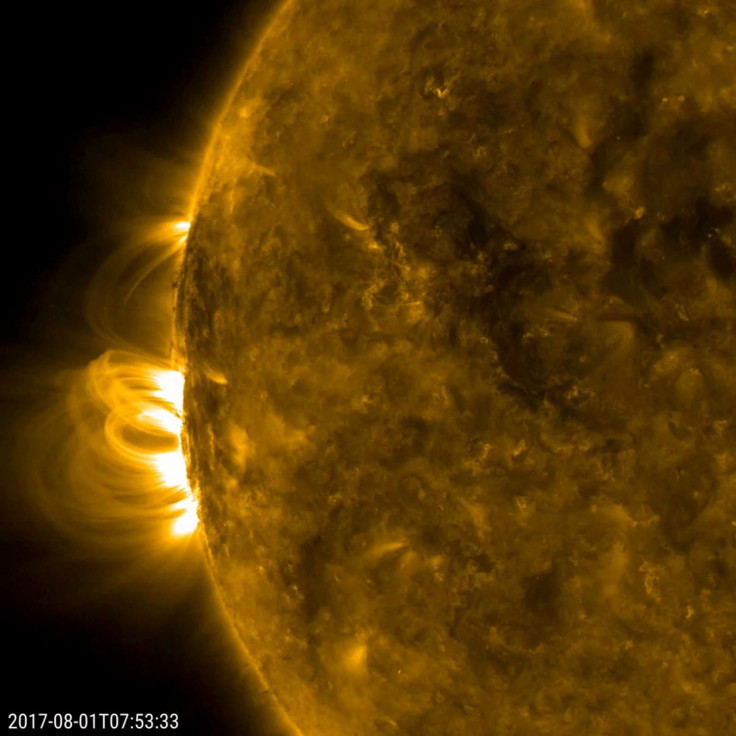Space Weather Forecast: Sun’s Coronal Mass Ejection May Hit Earth This Week
KEY POINTS
- Earth may get hit this week by a coronal mass ejection (CME) that was recently detected leaving the Sun
- The approaching CME was detected by NOAA
- The NOAA said the CME is faint, making its chances of triggering a powerful geomagnetic storm on Earth very low
An emission from the Sun known as a coronal mass ejection (CME) was recently detected leaving the massive star. According to a weather forecasting agency, the approaching CME may hit Earth in the next couple of days.
A CME is a cloud of plasma and magnetic field that is released from the Sun’s atmosphere, which is known as a corona.
The approaching CME was detected by the National Oceanic and Atmospheric Administration (NOAA) and was included in the agency’s three-day geomagnetic forecast. As noted by the agency, the CME is moving slowly away from the Sun.
Based on the current direction of the CME, NOAA predicted that it could hit Earth on July 24. Fortunately, NOAA noted that the chances of the CME triggering a powerful geomagnetic storm on Earth are pretty slim since it is very faint.
According to weather forecasting site SpaceWeather.com, the approaching CME might trigger auroras or polar lights if it hits Earth.
CMEs are natural occurrences on the Sun’s surface. According to NASA, these emissions are triggered by explosions on the surface of the Sun. They can erupt in any direction and travel across vast distances in space.
Most of the time, CMEs that hit Earth are relatively harmless and are not powerful enough to cause destructive geomagnetic storms. Unfortunately, due to society’s growing dependence on technology, NASA noted that a powerful CME or solar event could have drastic effects on Earth.
According to the agency, a powerful solar storm could affect the ionosphere, which is the layer of Earth’s atmosphere that contains concentrations of ions and free electrons. The disruptions could knock out power and telecommunication facilities.
Aside from facilities on Earth, satellites and spacecraft operating in low Earth orbit will also be affected by a powerful solar storm.
“Strong electrical currents driven along the Earth’s surface during auroral events disrupt electric power grids and contribute to the corrosion of oil and gas pipelines,” NASA stated. “Changes in the ionosphere during geomagnetic storms interfere with high-frequency radio communications and Global Positioning System (GPS) navigation.”
“During polar cap absorption events caused by solar protons, radio communications can be compromised for commercial airliners on transpolar crossing routes,” the agency added.

© Copyright IBTimes 2024. All rights reserved.





















